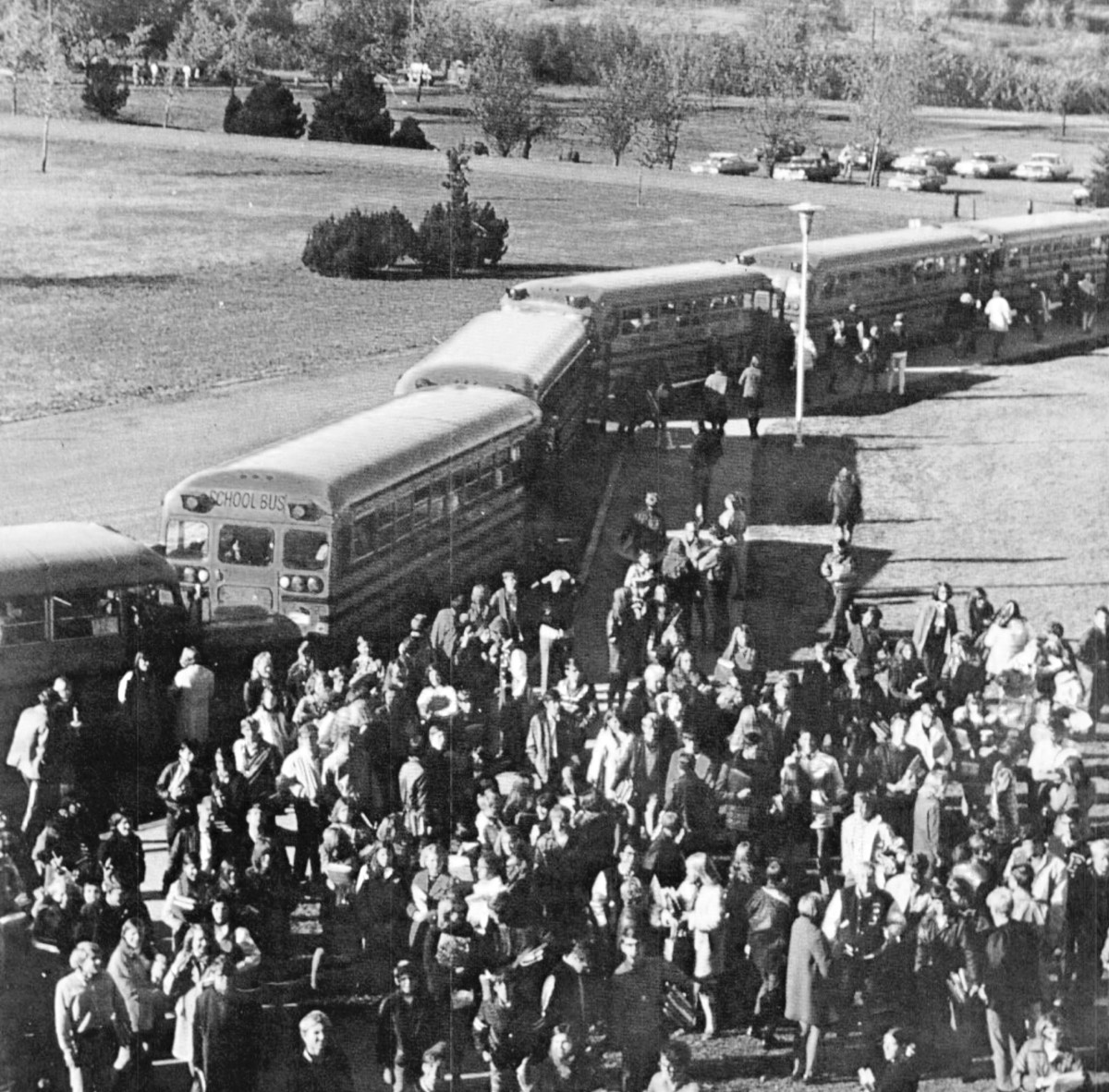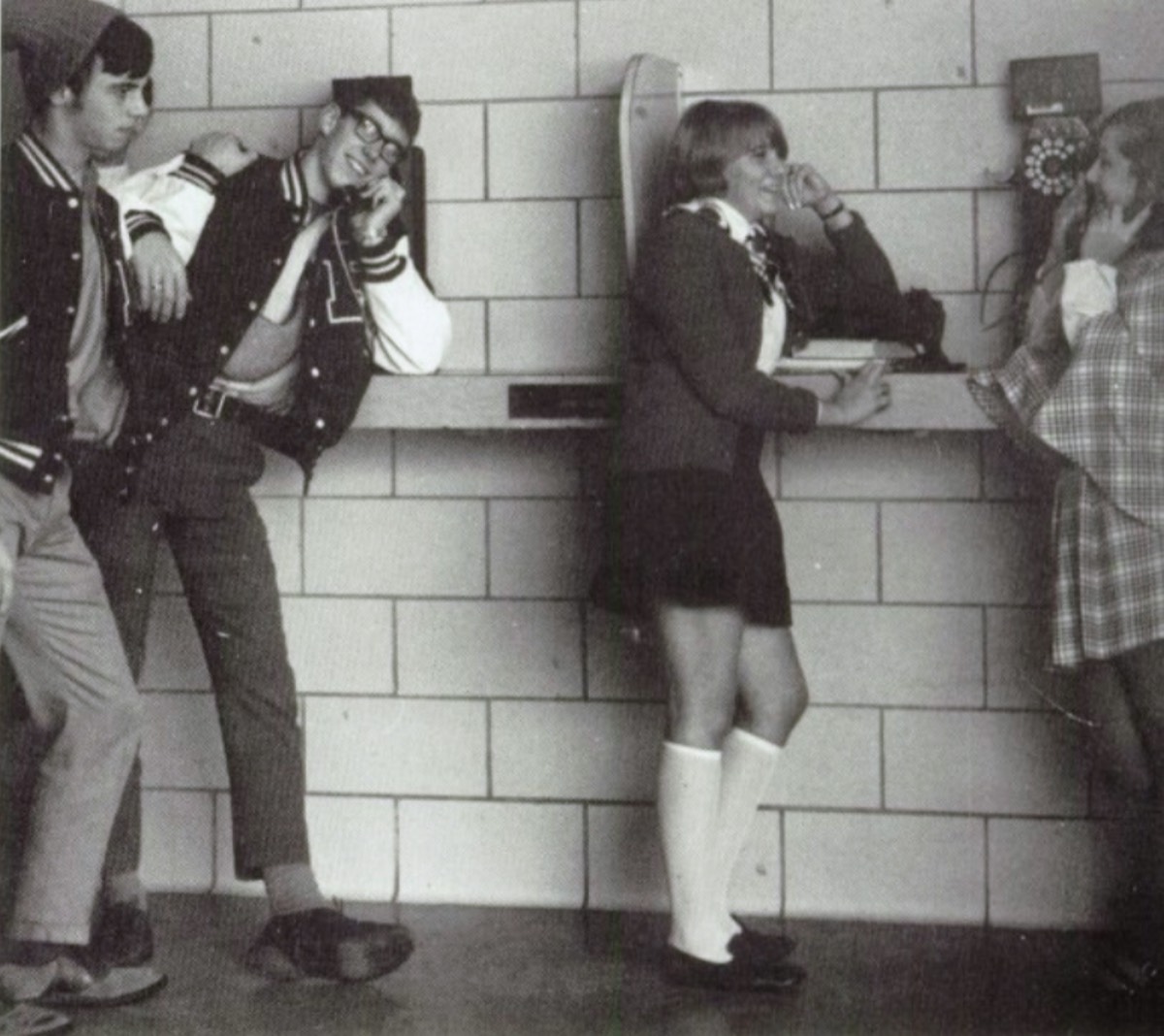About this website
Remembering Alexander Ramsey Senior High School
In the late 1960s and early 70s high schools in America were different than they are now. America was different. Yet some things remain the same.
Ramsey High School no longer exists. It opened in 1953 when the graduating class of 1970 was only one or two years old. Roseville was out in the country, not yet a city, but suburban ramblers were replacing farmland as people moved in from city neighborhoods like Frogtown and Rice Street. The next two decades saw rapid growth and by 1969 most of the available land had been developed. That was also the year Rosedale opened, upstaging HarMar Mall as the area's largest shopping center.
The last class graduated in 1986. Roseville's population was aging and the baby boom generation was gone. The next year Ramsey merged with Roseville's other high school, Frank B. Kellogg, due to declining enrollment. The merger created Roseville Area High School -- same site, same building, which would be expanded several times. But the Ramsey Rams would be replaced by the Roseville Raiders. The student population would soon change too, as it was changing in Minnesota and throughout the country.
The last class graduated in 1986. Roseville's population was aging and the baby boom generation was gone. The next year Ramsey merged with Roseville's other high school, Frank B. Kellogg, due to declining enrollment. The merger created Roseville Area High School -- same site, same building, which would be expanded several times. But the Ramsey Rams would be replaced by the Roseville Raiders. The student population would soon change too, as it was changing in Minnesota and throughout the country.

School buses dropped off Ramsey students each morning
Roseville Area High School today is diverse, even slightly more diverse than the average Minnesota high school. Today 57 percent of Roseville high school students are white, while 18 percent are Asian, 13 percent are Black and 10 percent are Hispanic.
The other thing that is different is technology. In 1969 there were no smartphones, IPads or personal computers. There were pay phones in the hallway. There were classes on operating key punch machines, and every other issue of Blueprint had an ad for Midway Typewriter repair.
If you drove to school (and only 15 percent of Ramsey students did), there was a good chance your car had an 8-track tape player. There were no CDs, no IPods, no downloads, and the now obsolete Sony Walkman cassette player wouldn’t exist for another nine years.
Despite time marching on, many of the concerns of students then and those today are likely the same. The student newspaper explored the issues that troubled and divided America in 1969: War and peace. Pollution and the environment. Censorship and freedom of expression. The role of religion in our lives. Drugs and addiction.

Students competed for the use of pay phones in the school hallway
One thing that allowed Blueprint to cover controversial topics fearlessly was an enlightened school administration that never censored the paper, even when editors strongly criticized school officials’ actions. That kind of freedom was not the case generally for student publications in the 1960s and 70s, and censorship of school newspapers and other forms of student expression remains an issue today.
In addition to bringing back memories, the publications available here contain some excellent reporting and writing. There are features, editorials, commentaries, reviews and even a few poems that recall the things that were important then and would remain with us as we moved on. There are stories about homecoming, Sno-Week, Friday night football games and all the other school sports -- with girls athletics notably absent. There was no girls’ basketball or track team at Ramsey in 1970. It wasn’t until two years later that Title IX would open the floodgates and allow girls to compete in varsity sports.
I wish we’d done more and done it better. I wish we’d explored topics like gender roles that were becoming part of our national conversation. Or provided a different perspective on life at suburban Ramsey by looking at the lives of less-privileged students at inner city schools.
The school year ended. We ran out of time.
But we did pretty well with the time we had.
Jeff Holman
Alexander Ramsey Class of 1970
Alexander Ramsey Class of 1970
The issues
September 26
Teacher-school board dispute disrupts school
October 20
Construction crews invade Ramsey
November 3
The Vietnam War comes home
November 17
Student government in the crosshairs
December 1
The race to college
December 17
The photo issue
February 20
What happened to school spirit?
March 13
The student and the law
March 20
Showdown over censorship
April
Supplement on life outside Ramsey
April 3
Students and religion
April 17
A pollution teach-in
April 27
Blueprint not worth reading?
May 1
What does high school really teach?
May 15
The school year in review
Teacher-school board dispute disrupts school
October 20
Construction crews invade Ramsey
November 3
The Vietnam War comes home
November 17
Student government in the crosshairs
December 1
The race to college
December 17
The photo issue
February 20
What happened to school spirit?
March 13
The student and the law
March 20
Showdown over censorship
April
Supplement on life outside Ramsey
April 3
Students and religion
April 17
A pollution teach-in
April 27
Blueprint not worth reading?
May 1
What does high school really teach?
May 15
The school year in review